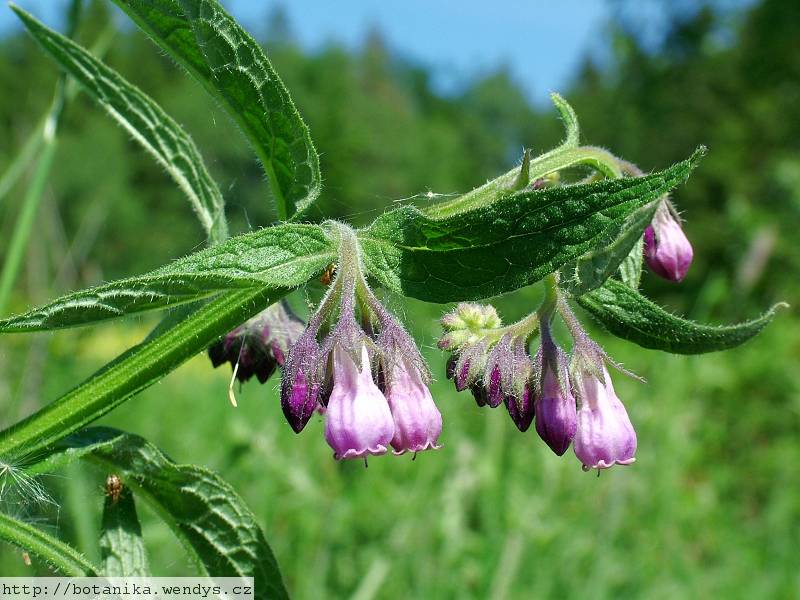

These studies suggested a reduction in swelling and pain in patients using this herbal preparation for sprains and bruises. The HMPC also noted 4 clinical studies carried out with a different comfrey preparation (not covered by this summary). In its assessment, the HMPC considered the well documented use of comfrey root for the relief of symptoms of minor sprains and bruises. Moreover, the intended use does not require medical supervision. This means that, although there is insufficient evidence from clinical trials, the effectiveness of these herbal medicines is plausible and there is evidence that they have been used safely in this way for at least 30 years (including at least 15 years within the EU).

Notes: A native of Eurasia, this species is often grown as an ornamental or medicinal herb.The HMPC conclusions on the use of comfrey root medicines for the relief of symptoms of minor sprains and bruises are based on their 'traditional use' in these conditions.

Occurence in the Chicago region: non-native Habitat and ecology: An occasional escape from cultivation, often found along railroads. This species may be confused with Anchusa officinalis, however, that species has more narrow leaves, and deeper blue flowers that have narrower petal tubes with obvious, larger, separate, somewhat flaring, more round-tipped lobes. asperum, except that species has very spiny, flattened, broad-based hairs along the stem and inflorescence the leaves rarely have basal tissue that continues down the stem (stem not winged) and the nutlets are noticeably wrinkled and rough. Similar species: Symphytum officinale is very similar to S. Root: a thickened taproot, secreting a sticky, bitter, gelatinous substance (mucilage). The basal stalk-like structure of each nutlet fits into a central pit of the otherwise flattish base of the remnant flower, thereby holding the nutlets at a slight upward angle with the tips pointing toward the center. Fruit: a cluster of four, black, smooth, shining, approximately 5 - 6 mm tall, somewhat egg-shaped, incurved nutlets with a lengthwise ridge on the inner side, and a prominent toothed basal rim surrounding a short, stalk-like, basal appendage. About Symphytum officinale: Product Category:Pain Indications:Promotes healing of bone trauma Directions:Adults & children 2 years of age and older. The style and stigma are just longer than the petal tube. Pistil: with one, four-lobed, two-chambered, superior ovary and a single, slender, threadlike style with a single stigma. Stamens: five, filaments about as wide as anthers, very short, attached to top inside of petal tube, but anthers never extended beyond petal tube. Petals: five, but fused into a long cylindric tube for most of their length, then separating into five, tooth-like lobes which are much shorter than the tube portion. Sepals: spreading-hairy, five, but fused at base (under half the total length), then separating into 5 - 9 mm long, somewhat lance-shaped, obviously pointed lobes. Flowers: creamy yellow, pale pink, or pale blue, 1.2 - 1.8 cm tall, radially symmetric, narrowly bell-shaped with long, cylindric petal tube, and very short, slightly outward curved, tooth-like lobes. Inflorescence: of several to many, often paired, nodding, stout, short, spreading-hairy, modified spike-like branches near top of stem in upper leaf axils, with individual flowers stalked. Leaves: alternate, spreading-hairy, non-toothed, of two kinds: basal and lower leaves stalked, large (15 - 30 cm long, 7 - 12 cm wide), and mostly egg-shaped upper leaves smaller, more narrow, and stalkless with leaf tissue continuing down the stem as wings (decurrent). Perennial herb 30 cm - 1.3 m tall Stem: stout, branching, densely covered with spreading, straight or recurved hairs, and winged lengthwise due to tissue of upper leaves continuing down the stem (decurrent).


 0 kommentar(er)
0 kommentar(er)
